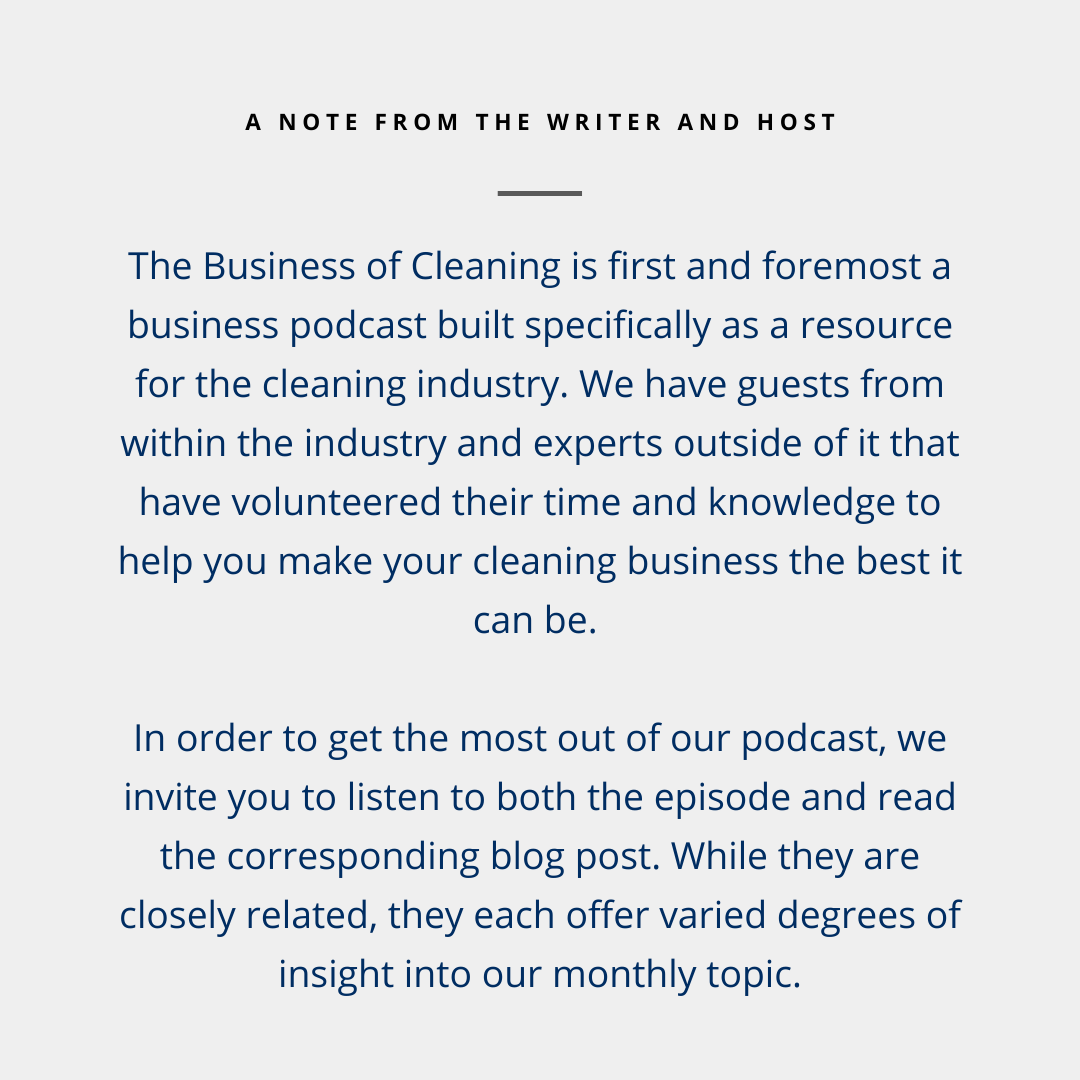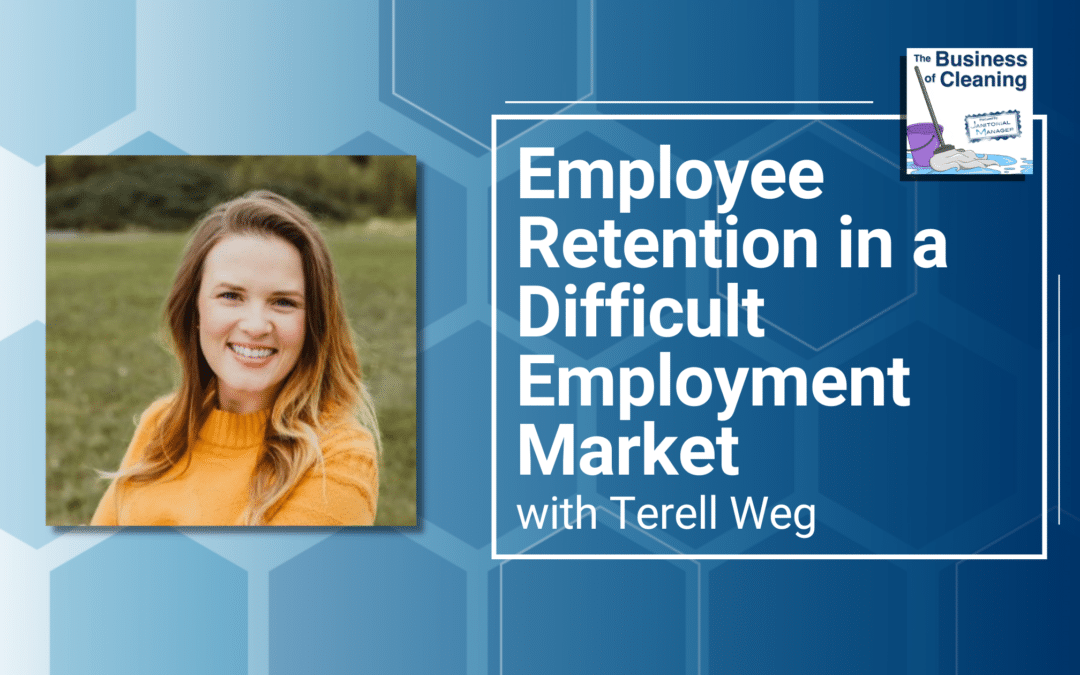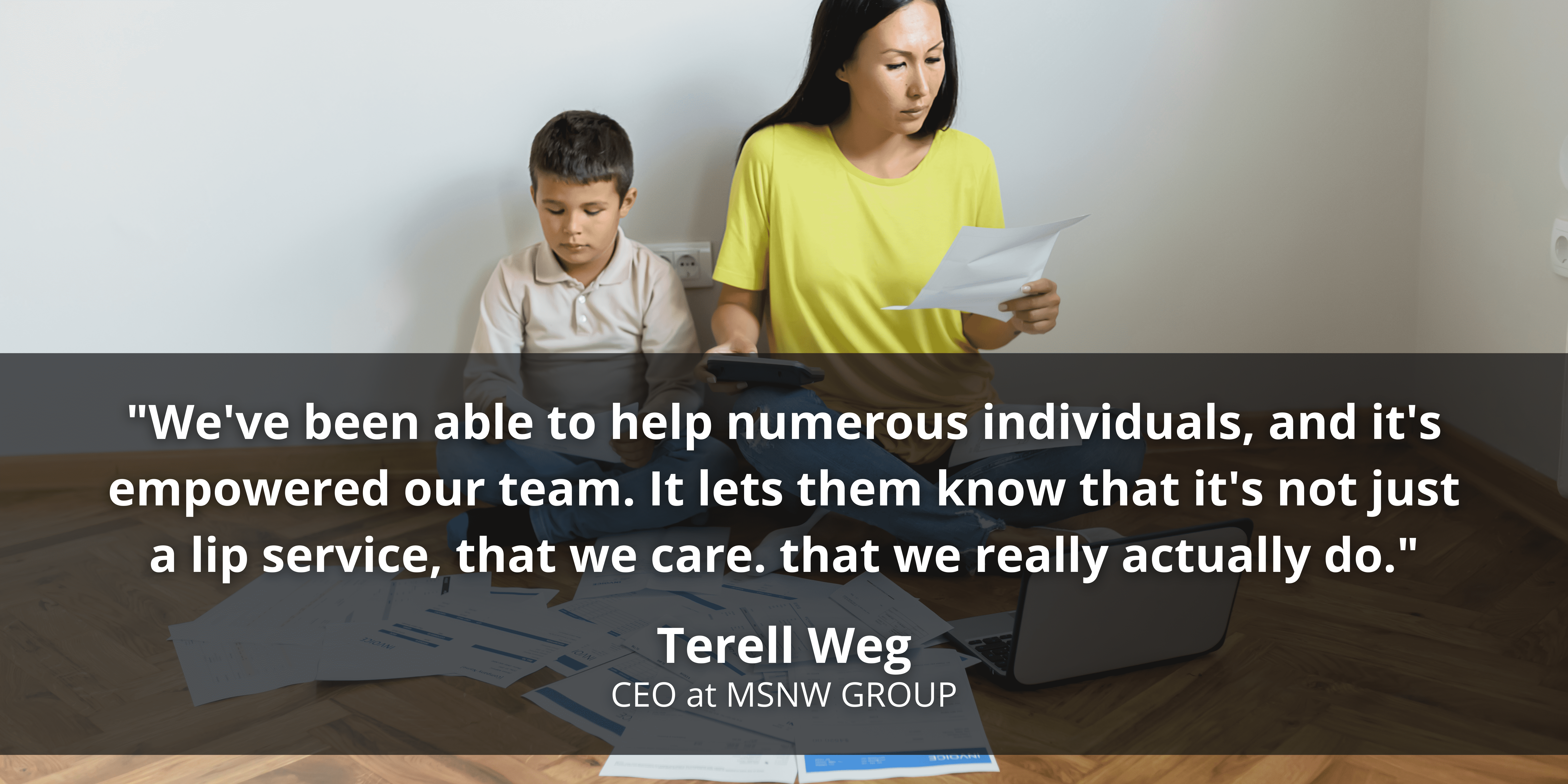Audio Version
Podcast Transcription
Video Version
From difficulties with staffing to the desire to improve company culture, good employee retention is a must, but how do you make yours the best it can be? I sat down with Terell Weg to find out.
Breaking Down Your Retention Rate
How often does an organization truly have a thorough breakdown of its retention rates? Most organizations will look only at the average number of employees who stay and how it changes year over year or over a specific period. In fact, it’s not surprising if the only time retention is brought up is when a team faces staffing shortages.
To truly understand your retention, look at it over different periods of time, across different departments, types of positions, and specific management personnel.

Breaking down retention throughout your cleaning operations allows you to better see what areas need the most attention and where you’re doing well.
To truly understand your retention, look at it over different periods of time, across different departments, types of positions, and specific management personnel. Breaking down retention throughout your cleaning operations allows you to better see what areas need the most attention and where you’re doing well.
Finding Your Problem Areas
Once you’ve created a better breakdown and understanding of your employee retention, it’s much easier to spot your problem areas. For example, do specific teams have higher levels of turnover than others?
Once you’ve highlighted these areas, it’s time to do a root cause analysis. To improve your retention, you need to first figure out why employees leave. Some turnover is natural, but excessive turnover is an indicator of larger problems.
Causes can range from poor management to overly difficult working conditions or poor training. Use exit interviews and sit down with current team members to determine what is causing people to leave.
Employees look to have their basic needs met, feel supported in their job, and be able to trust their bosses and their team. If you’re lacking in one of these areas for any reason, then that’s probably one of the contributing factors to high turnover.
Addressing Your Problem Areas
I can’t give you a step-by-step guide on how to magically improve every retention problem you might have, but we covered some best practices during my interview with Terell Weg of MSNW Group, and here’s some advice to get you started:
- Lack of recognition and appreciation – Your employees aren’t machines, so expecting them to keep plugging and chugging at laborious tasks with a minimum wage paycheck and no appreciation is one of the worse business models you can adopt. Ensure that you provide regular feedback, express interest in employee growth, and recognize achievement. You want employees to feel validated and appreciated with a chance for upward mobility or they’ll leave.
- Insufficient Training – If an employee doesn’t feel prepared for or good at their job, they’re unlikely to commit to it long-term. Host refresher training yearly, and train your whole team when introducing or changing a process. Even a 30-minute training can make them feel more enabled. It’s also important to make sure your new hire training leaves them feeling ready.
- Poor Management – We are all familiar with working for a bad boss. In fact, bosses play one of the largest roles in the quality of work-life for an employee. Just because someone is great at their job doesn’t mean they’re a great leader. Look for those who are able to coach, oversee, and support team members. Also, make sure your leaders have training every so often and receive their own feedback and reviews.
- Life events/lack of flexibility – It’s just a fact of life that you will lose employees due to completely non-work-related reasons. The best way to decrease the chances of someone leaving due to outside factors is to make sure you’re flexible. You can do this by having good PTO and family leave policies as well as working with employees to create a schedule that’s doable for them wherever possible.
These may not be your only problem areas for retention but they are some of the most common, even across various industries. Work to build teams and policies around strengthening your desired culture in order to attract and keep people who support that vision.
The Care Fund
One of my favorite parts of what the MSNW Group does to support their employees is their Care Fund. It’s an instance where the company took a unique initiative, not because of advice they found online or because of a conscious effort to improve their bottom line through retention (though no doubt that was an eventual benefit), and it paid off.
The Care Fund was started informally by team members that were able and wanted to help other team members that had fallen on hard times. It eventually evolved into a formal program where employees can make one-time or recurring payments to the fund and the distribution of funds is managed through a formal application process by a committee.
They’ve helped team members pay bills, make a downpayment on an apartment, put gas in their car, and more. All of this helps employees fulfill their needs, builds trust and loyalty, and shows appreciation for employees in a way that is rarely achieved.
The end result? More team members want to stay long-term. Learn more by listening to my conversation with Terell.
About Our Guest(s):

Terell Weg
CEO of MSNW Group
Terell Weg is the CEO of MSNW Group, based out of Washington. She’s worked within the industry and her family’s business from a young age, starting from the bottom and working her way up through hard work and determination.
MSNW Group is a great example of how powerful cultivating a positive culture and support structure for team members can be. Over the years they have successfully grown their reach to encompass much of the tri-state area. In my conversation with Terell, we go over the history of MSNW Group, how she’s grown as a leader, and how they have managed to connect to their employees and build a desirable work culture.



